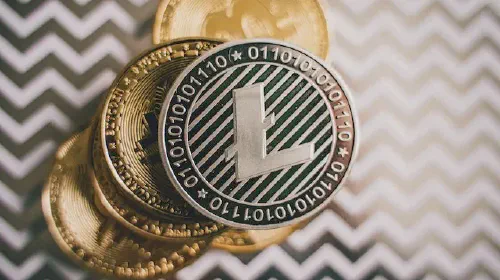Biometrics in Secure Payments: Enhancing Security and Convenience
Salomon Kisters
Jun 2, 2023This post may contain affiliate links. If you use these links to buy something we may earn a commission. Thanks!
In today’s digital world, security is of utmost importance. With the massive increase in the number of electronic transactions, maintaining security has become a critical issue. While traditional methods of authentication, such as passwords and PINs, provide a good level of security, they are vulnerable to hacking and phishing attacks.
Biometrics, on the other hand, provides a more reliable and secure method of authentication. Biometric authentication is a method of verifying an individual’s identity using unique characteristics such as fingerprints, face recognition and voice authentication. With biometric authentication, there is no need to remember a password or PIN, and the user’s identity is verified automatically.
In this blog post, we will explore the role of biometrics in secure payments and take a closer look at how they work. We will also discuss their benefits and drawbacks and provide insights into the future of biometric authentication in the world of payment security.
Different types of biometric authentication used in secure payments
Biometric authentication methods are used in secure payments to increase fraud protection and ensure that the true account holder is making the transaction. There are various types of biometric authentication that are used in secure payments such as fingerprints, iris scans, voice recognition, facial recognition, and behavioral biometrics.
Fingerprint authentication involves scanning the customer’s fingerprint through a biometric scanner. This method is widely used in mobile payments and is known for being highly accurate and efficient.
Iris scans work by scanning the customer’s unique iris pattern and comparing it to the stored data on file. This method is reliable and can be used in a wider range of payment scenarios.
Voice recognition relies on the customer’s unique voice patterns to verify their identity. It is a relatively new biometric authentication method but is being used in voice-enabled payments and phone banking.
Facial recognition involves scanning the customer’s face and processing it to identify unique features. This method is increasingly being used in retail stores and is known for its speed and ease of use.
Finally, behavioral biometrics assesses patterns of behavior, such as the way that a user types or swipes on their device. This method is also known as “continuous authentication” and is becoming more popular in mobile banking apps.
Biometric authentication techniques in secure payments provide a highly secure method of authentication beyond traditional password methods. Each method has its unique advantages, and implementing multiple levels of security can offer a more robust fraud-detection system.
Advantages and disadvantages of using biometrics in payments
While there are many advantages to using biometrics in this context, there are also some significant disadvantages to consider.
One advantage of using biometrics in payments is the increased security they offer. Biometric data, such as fingerprints or facial recognition, are unique and much harder to replicate than traditional password or PIN-based systems. This makes biometric authentication a strong security measure that can help prevent fraudulent transactions.
Another advantage is the convenience that biometrics can offer. Many people find it much easier to use biometric authentication than typing in passwords or remembering PINs. Biometrics can also speed up the payment process, making transactions quicker and more efficient.
However, there are also some disadvantages to using biometrics in payments. One significant issue is the potential for biometric data to be hacked or stolen. If a hacker gains access to a user’s biometric data, they could potentially use this information to make unauthorized transactions or even gain access to other personal accounts.
Another issue is the potential for system errors or malfunctions. Biometric authentication systems can be more complex than traditional authentication methods, and errors could result in denied transactions or other problems.
Comparison of biometric authentication and traditional payment methods
When it comes to secure payments, traditional methods include passwords, PINs, and signature verifications. However, these methods are prone to vulnerabilities such as fraud, theft, and hacking. On the other hand, biometric authentication uses unique physical characteristics such as fingerprints, voice, and facial recognition, making it harder for fraudsters to access personal information.
Apart from being more secure, biometric authentication is also more convenient. Traditional payment methods may require users to carry cards or remember passwords, which can be inconvenient and difficult to manage. Biometric authentication, on the other hand, requires nothing more than a person’s physical presence.
Additionally, biometric authentication has the added benefit of reducing transaction times. Since biometric authentication does not require a physical card or password, the authentication process can be completed in a matter of seconds. This means that customers can complete transactions more quickly and businesses can process more transactions in less time.
Potential security risks associated with biometric payments and ways to mitigate them
While biometric payments offer a convenient and secure way to complete transactions, there are still potential security risks that must be addressed. One of the main concerns is the risk of biometric data being compromised. If a hacker gains access to this sensitive information, they could potentially use it for fraudulent purposes.
To mitigate this risk, it is important for organizations to implement strong security measures such as encryption and multi-factor authentication. Additionally, users should be educated on best practices for protecting their biometric data, such as avoiding unsecured Wi-Fi networks and regularly updating their passwords.
Another potential risk is the possibility of false positives or false negatives. If the biometric system incorrectly verifies or rejects a user, it can create frustration and inconvenience for both the user and the merchant. This can also lead to a loss of revenue and a negative customer experience.
To address this issue, it is important for organizations to regularly test and improve their biometric systems, as well as have backup authentication methods in place in case of errors.
Future of biometric payments
As technology continues to advance, biometric payment methods are expected to revolutionize the way we make payments. With the ability to use unique biological characteristics, such as fingerprints and facial recognition, to authenticate transactions, biometric payments offer a higher level of security compared to traditional payment methods.
In fact, according to a recent report by Goode Intelligence, biometric payment transactions are expected to reach $2.5 trillion by 2024. This growth is largely attributed to a rise in demand for secure payment methods, as well as an increase in the number of smartphones and wearable devices that are equipped with biometric authentication capabilities.
One of the biggest impacts that the growth of biometric payments will have on the payments industry is a shift towards a more seamless, frictionless payment experience. With biometric authentication, users will no longer need to enter passwords or PINs, simplifying the checkout process and reducing the risk of identity theft and fraud.
As biometric payment methods become more widely adopted, they may also lead to an increase in financial inclusion. With the ability to authenticate transactions using biometric data, individuals who are unbanked or underbanked may have greater access to financial services and e-commerce platforms.
Overall, the future of biometric payments looks bright, with the potential to enhance security, streamline transactions, and increase financial inclusion.
Stay informed with the latest insights in Crypto, Blockchain, and Cyber-Security! Subscribe to our newsletter now to receive exclusive updates, expert analyses, and current developments directly to your inbox. Don't miss the opportunity to expand your knowledge and stay up-to-date.
Love what you're reading? Subscribe for top stories in Crypto, Blockchain, and Cyber-Security. Stay informed with exclusive updates.
Please note that the Content may have been generated with the Help of AI. The editorial content of OriginStamp AG does not constitute a recommendation for investment or purchase advice. In principle, an investment can also lead to a total loss. Therefore, please seek advice before making an investment decision.

Hedera (HBAR) Overview: Projects, Partnerships, Price History, and 2023 Predictions
Learn about Hedera (HBAR) projects, partnerships, price history, and 2023 predictions. Find out why it's gaining popularity among investors.

Is MetaMask Safe? What You Need to Know
Learn all about how secure MetaMask really is - covering everything from basic security measures to advanced techniques that MetaMask offers its users to keep their assets secure.

Advantages and Disadvantages of Blockchain in Accounting - A Comprehensive Guide
Understand the advantages and disadvantages of blockchain technology in accounting practices. Learn how blockchains can revolutionize accounting processes.
Protect your documents
Your gateway to unforgeable data. Imprint the authenticity of your information with our blockchain timestamp